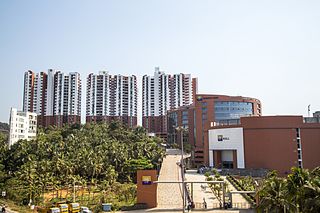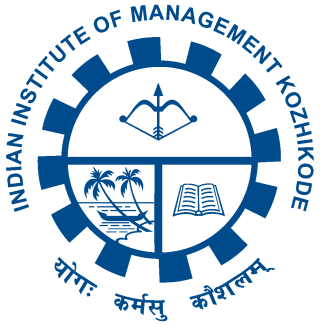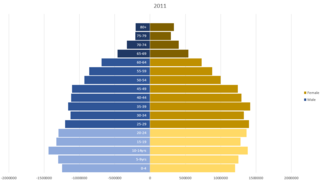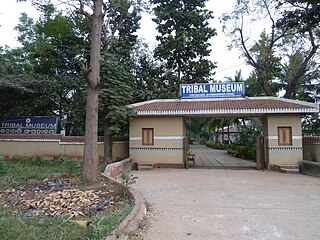Related Research Articles

Kozhikode, also known in English as Calicut, is a city along the Malabar Coast in the state of Kerala in India. It has a corporation limit population of 609,224 and a metropolitan population of more than 2 million, making it the second largest metropolitan area in Kerala and the 19th largest in India. Kozhikode is classified as a Tier 2 city by the Government of India.

Kodagu is an administrative district in the Karnataka state of India. Before 1956, it was an administratively separate Coorg State, at which point it was merged into an enlarged Mysore State.

Wayanad is a district in the north-east of Indian state Kerala with administrative headquarters at the municipality of Kalpetta. It is the only plateau in Kerala. The Wayanad Plateau forms a continuation of the Mysore Plateau, the southern portion of Deccan Plateau. It is set high in the Western Ghats with altitudes ranging from 700 to 2100 meters. Vellari Mala, a 2,240 m (7,349 ft) high peak situated on the trijunction of Wayanad, Malappuram, and Kozhikode districts, is the highest point in Wayanad district. The district was formed on 1 November 1980 as the 12th district in Kerala, by carving out areas from Kozhikode and Kannur districts. An area of 885.92 km2 of the district is forested. Wayanad has three municipal towns—Kalpetta, Mananthavady and Sulthan Bathery. There are many indigenous tribes in this area. The Kabini River, a tributary of Kaveri River, originates at Wayanad. Wayanad district, along with the Chaliyar valley in neighbouring Nilambur in Malappuram district, is known for natural gold fields, which are also seen in other parts of the Nilgiri Biosphere Reserve. Chaliyar river, which is the fourth longest river of Kerala, originates on the Wayanad plateau. The historically important Edakkal Caves are located in Wayanad district.

Palakkad District is one of the 14 districts in the Indian state of Kerala. It was carved out from the southeastern region of the former Malabar District on 1 January 1957. It is located at the centre of Kerala. It is the largest district in the state since 2006. The city of Palakkad is the district headquarters. Palakkad is bordered on the northwest by the Malappuram district, on the southwest by the Thrissur district, on the northeast by Nilgiris district, and on the east by Coimbatore district of Tamil Nadu. The district is nicknamed "The granary of Kerala". Palakkad is the gateway to Kerala due to the presence of the Palakkad Gap, in the Western Ghats. The 2,383 m high Anginda peak, which is situated in the border of Palakkad district, Nilgiris district, and Malappuram district, in Silent Valley National Park, is the highest point of elevation in Palakkad district. Palakkad city is located just 50 km away from Coimbatore, a major city in Tamil Nadu state.

The Adivasi refers to inhabitants of Indian subcontinent, generally tribal people. The term is a Sanskrit word coined in the 1930s by political activists to give the tribal people an indigenous identity by claiming an indigenous origin. The term is also used for ethnic minorities, such as Chakmas of Bangladesh, Khas of Nepal, and Vedda of Sri Lanka. The Constitution of India does not use the word Adivasi, instead referring to Scheduled Tribes and Janjati. The government of India does not officially recognise tribes as indigenous people. The country ratified the International Labour Organization (ILO) Convention 107 on Indigenous and Tribal Peoples of the United Nations (1957) and refused to sign the ILO Convention 169. Most of these groups are included in the Scheduled Tribe category under constitutional provisions in India.

The Scheduled Castes (SCs) and Scheduled Tribes (STs) are officially designated groups of people and among the most disadvantaged socio-economic groups in India. The terms are recognized in the Constitution of India and the groups are designated in one or other of the categories. For much of the period of British rule in the Indian subcontinent, they were known as the Depressed Classes.

Indian Institute of Management Kozhikode is an autonomous public business school located in Calicut (Kozhikode), Kerala. The institute, set up in 1996 by the Government of India in collaboration with the State Government of Kerala, is one of the 20 Indian Institutes of Management (IIMs). It was the fifth IIM to be established.

Attappady (HQ:Agali) is a tribal taluk in Kerala state covering an area of 735 km2 (284 sq mi). It is carved out from Mannarkkad taluk in Palakkad district on February 2021. Attappady Reserve Forest is a protected area comprising 249 km2 of land area in the western parts of Attappady. It is one among the reserved forests and protected forests of India. Attappadi valley in Palakkad district along with the neighbouring Chaliyar valley of the Nilambur region in Malappuram district, is known for natural Gold fields, which is also seen in the other regions of Nilgiri Biosphere Reserve.

Kerala is a state in south-western India. Most of Kerala's 34.8 million people are ethnically Malayalis. Most of the Malayalam and English speaking Keralites derive their ancestry from Dravidian communities that settled in Kerala. Additional ancestries derive from millennia of trade links across the Arabian Sea, whereby people of Arab, Jewish, Syrian and other ethnicities settled in Kerala. Many of these immigrants intermarried with native Malayalam speakers resulting in formation of many Muslims and Christians in Kerala. Some Muslims and Christians thus take lineage from Middle Eastern settlers mixed with local population.
Mudha Mooppan was the head of a clan of Kurumba, a primitive tribe living in the hamlet of Attappadi, Kerala, India. Prior to heading the clan in Attapaddi, Mudha Moopan had been headman in the hamlet of Anavai for over 50 years.

The Dhimal or Dhemal(in Nepali:धिमाल) are an Kirati ethnic group residing in the eastern Terai of Nepal. They are a Sino-Tibetan-speaking ethnic group of the eastern Terai. They mainly reside in Morang and Jhapa districts of Nepal and Darjeeling district of West Bengal, India. They are respected as the "First Citizens" of Damak municipality.

Tribals in Kerala are the tribal population found in the Indian state of Kerala. Most of the tribals of Kerala live in the forests and mountains of Western Ghats, bordering Karnataka and Tamil Nadu.
The Kerala Institute for Research Training and Development Studies of Scheduled Castes and Scheduled Tribes (KIRTADS) is a museum located in Chevarambalam near Chevayoor in Kozhikode.

Tribal Research Institute Museum, Museum of Tribal Arts and Artifacts, is a museum in Bhubaneswar, Odisha inside the campus of Scheduled Castes & Scheduled Tribes Research & Training Institute. It is popularly known as Tribal Museum and conceptually labeled as Museum of Man. It has life-sized authentic tribal dwellings, created by the tribal craftsmen offers a view of the State's tribal heritage. It has sections which showcase tribal artifacts and objects, focusing on well researched, documented cultural life of tribals of Odisha. It is headed by a Director, who is in the rank of a University Professor, and the administrative control lies in the hands of ST, SC, Minorities, and Backward Classes Welfare Department, Government of Odisha.

The Kudmi are a community in the states of Jharkhand, West Bengal, Odisha and Bihar of India. They were primarily agriculturalist. They are also known as Kurmi, Kurmi Mahto/Mahato.

Chevarambalam is a suburb of Kozhikode city. This residential layout lies between the Mavoor Road and the Wayanad Road.

Kurumba (Tribe) (Hindi: Gadariya,Pal)(Malayalam: Kuruman)(Kannada: Kuruba, Kurubaru)(Telugu: Kuruma)(English:Kurumbas, Kurumans, Kurumbars, Kurumans, Kurubas, Kurubarus), a fierce race is the most important of all those tribes, owing to the influential part they have played in the History of India. They were representatives of ancient Kurumba or Pallavas who were once so powerful throughout Southern India. Kurumba sovereignty was affected by the Chola King Adondai about 7th or 8th century AD and they were scattered far and wide.
The Eravallan are Adivasi, a designated Scheduled Tribe in the Indian state of Kerala. They are an aboriginal tribe whose traditional way of life has been based on hunting and gathering.
P. R. G. Mathur was an Indian anthropologist noted for his studies on the indigenous communities in India in general and Kerala in particular. He is also known for his efforts to bring the tribal community in Attappadi and Wayanad in Kerala to the mainstream of society by working among them. He had held several positions in the Anthropological Survey of India. He served the Kerala Institute for Research, Training and Development Studies of Scheduled Castes and Scheduled Tribes (KIRTADS) as its director for more than 15 years.
References
- ↑ Staff Reporter. "Museum for tribal freedom fighters on KIRTADS campus". The Hindu. Retrieved 12 December 2022.
- ↑ "Published Works". KIRTADS. Retrieved 11 December 2022.
- ↑ "Unpublished Works". KIRTADS. Retrieved 11 December 2022.